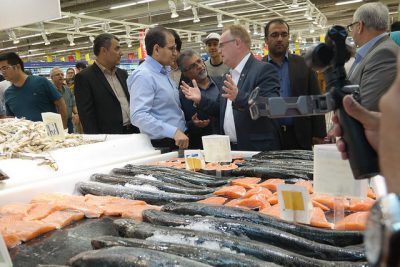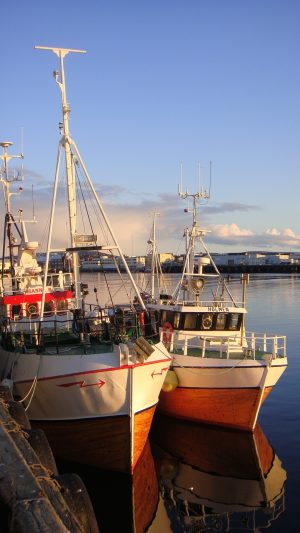Norway’s seafood industry, especially salmon, is starting the New Year off with even more record high prices and strong demand. Salmon prices are also expected to rise by another 10 percent in the first half of this year, and the industry is considered one of the country’s most secure.

“It looks like 2017 will be even better than our record year in 2016,” Piotr C Wingaard, sales director for Fish Pool, told newspaper Dagens Næringsliv (DN) this week. Fish Pool sells salmon in the spot market, where the price for Norwegian salmon is NOK 72 per kilo, much higher than the earlier record prices set in 2016. He thinks the “salmon party” will continue through next year at least.
He noted that production in 2017 will be a bit higher than in 2016, “but the increase will be so little that the market isn’t fully satisfied.” The re-opening of the Chinese market, after Norway and China normalized diplomatic relations just before Christmas, will also boost demand.
“I actually haven’t any idea about salmon prices, we’re just producing here,” Inger Marie Pedersen, who works in Marine Harvest’s salmon processing plant at Eggesbønes south of Ålesund, told DN. She’s born and reared in Eggesbønes and is now raising her own family there, thanks to the jobs the salmon industry is providing. Called oppdrett (fish farming), it remains controversial because of a lice problem at offshore farms that has threatened Norway’s wild salmon as well. Efforts continue to rid the industry of lice, though, and Norwegian salmon remains one of the country’s biggest export products.
“This is a safe and secure business that’s growing,” Pedersen told DN. “These local jobs (often in outlying areas where Norway needs economic activity) mean a lot for folks, especially when times are tough in the oil business.”

As Norway’s economy starts to recover after the shock of the oil price collapse nearly three years ago, the seafood industry is more important and booming like never before. Commercial fishing boats from Northern to Southern Norway have also been enjoying very good times, as demand for seafood rises worldwide. DN recently reported that fishing boat owners and workers are making more money than ever before: “The boats are running around the clock,” 26-year-old Christian Andersen of the far northern town of Berlevåg told DN. He earned more than NOK 1 million (USD 116,000) last year and jokingly has a dollar-sign made from fishing hooks as the logo on his fishing boat, called Nordbanken.
He mostly delivers cod and crab, along with many others catching “wild” as opposed to farmed seafood. As of November, their industry organization Norges Råfisklag put the value of the year’s catch so far at NOK 10 billion in Northern Norway and Trøndelag alone, well ahead of last year’s NOK 9.7 billion.
2016 marked the third year in a row of “all-time high” sales, with exports hitting nearly NOK 92 billion (USD 11.6 billion). Those active in the fishing industry now top the tax lists in their communities, and never before have fish like torsk (cod) attracted such high prices. They’re also high for kveite (halibut) and many other types of white fish hauled out of the Barents Sea, all of it within agreed fishing quotas regulated by the state in cooperation with Russia.
King crab also remains popular, with those trapping it getting as much as NOK 140 a kilo, and consumers in Oslo paying around NOK 500. It all involves hard work, not least on dark, cold and often stormy days, but the rewards are there now, along with lots of fresh air and exercise. Processors are willing to pay well for good quality: “Nothing beats fresh fish caught on a line in terms of quality,” said Odd Magne Nylund, who runs a receiving station at the North Cape for fish and competes with others to attract boats and their catch. He’ll pay premium prices for premium fish and also offers special services for the fishermen. The receiving stations also generate jobs along the coast, at a time when Norway’s biggest industry, oil, has cut jobs.
The downturn in the oil industry, by the way, has actually helped the seafood industry. Lower oil prices weakened the Norwegian krone, but that made currency exchange rates far more favorable, and the prices of Norwegian seafood exports more competitive on the international market.
newsinenglish.no/Nina Berglund

